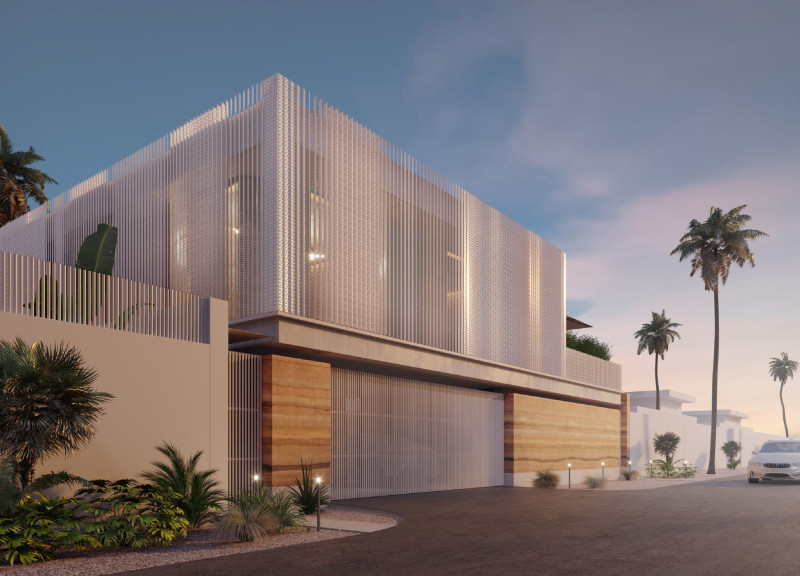5 key facts about this project
The architecture showcases an integration of natural elements with built form, underscoring a commitment to sustainability. Key components of the project include a well-considered facade design that features a combination of expansive glass panels and carefully selected cladding materials. The glass elements not only maximize natural light penetration but also establish a seamless connection between the interior and exterior spaces, enhancing the overall experience for occupants by framing the picturesque views of the landscape.
The roofing structure is particularly noteworthy for its geometric configuration, which subtly echoes the topography of the surrounding area. This feature not only contributes to the architectural aesthetic but also promotes environmental sustainability through efficient water management systems that collect rainwater. The roof design, in conjunction with other sustainable features, reflects a holistic approach to architecture that prioritizes both functionality and ecological considerations.
Significant attention is given to the landscaping surrounding the project, which incorporates native plants chosen for their low water needs and ability to thrive within the local ecosystem. The use of permeable pathways allows for rainwater infiltration, supporting groundwater replenishment while connecting various outdoor spaces that encourage social engagement and interaction among users.
Interior spaces within the project have been meticulously laid out to promote both comfort and utility. Open-plan areas facilitate collaboration and communication, while private spaces are designed to ensure acoustic privacy and comfort. The selection of materials such as reclaimed wood and bamboo adds a sense of warmth to the interiors, aligning with the overarching theme of sustainability. These materials not only contribute to the architectural identity but also tell a story of responsible sourcing and environmental awareness.
Unique design approaches inform the implementation of various sustainable technologies throughout the project. For instance, photovoltaic panels are integrated into the roof system, generating solar energy that contributes to the building's overall energy needs. Such innovative solutions demonstrate a forward-thinking perspective on energy use and efficiency. Further, the incorporation of energy-efficient HVAC systems ensures that occupants enjoy a comfortable environment while minimizing energy consumption.
What sets this project apart is its systematic integration of ecological and community-oriented principles into every aspect of its design. The architecture exhibits a careful consideration of place, embodying the idea that buildings can enhance both the landscape and the lives of those who inhabit them. The project stands as an invitation for exploring collaborative living through shared spaces that foster a sense of belonging, reflecting a modern take on community engagement.
For those seeking further insights into the intricacies of this architectural endeavor, reviewing the architectural plans, architectural sections, and architectural ideas will provide a deeper understanding of how thoughtful design can lead to environments that are not only functional but also enriching. This project serves as a valuable case study for anyone interested in sustainable architecture and innovative design practices.


 Aleksei Agarkov
Aleksei Agarkov 























